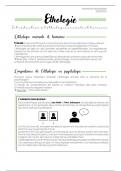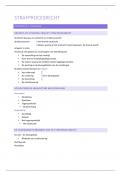Tentamen (uitwerkingen)
Gel Electrophoresis lab write-up
- Vak
- Instelling
Gel Electrophoresis lab write-up 1 Gel Electrophoresis lab write-upTitle: Restriction Digestion and Analysis of Lamba DNAObjective: 1.To learn how to cut lamba DNA into a series of fragments using restriction enzymes.2.To learn to separate and sort a large group of DNA molecules according to size...
[Meer zien]






